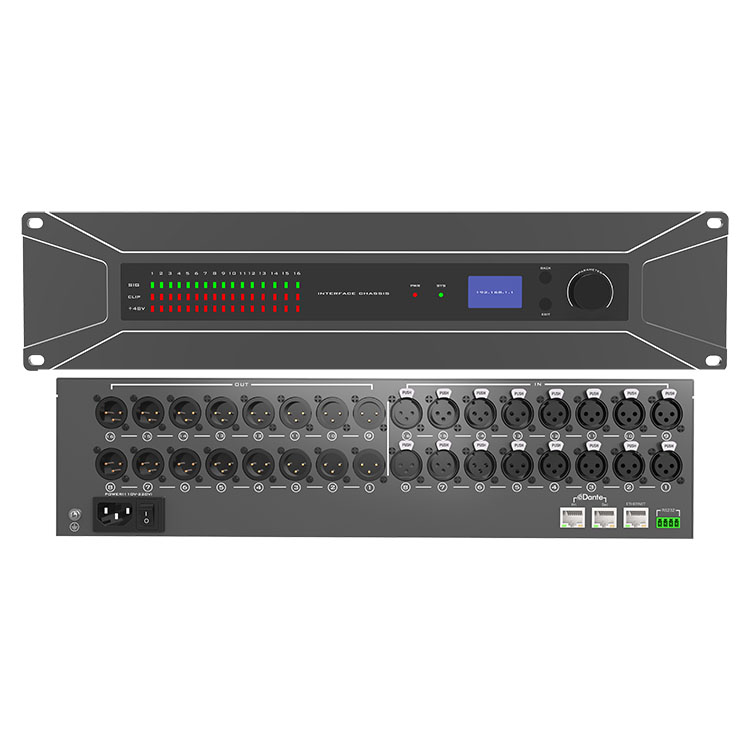Key features and functions of an audio interface
2023-10-16
An audio interface, also known as a sound interface, audio sound card, or external sound card, is a hardware device that connects to a computer or other digital audio source to facilitate high-quality audio input and output. Audio interfaces are commonly used in recording studios, home recording setups, live sound systems, and other professional audio applications. They serve as a bridge between analog and digital audio signals, enabling users to capture and reproduce audio with improved sound quality and flexibility.
Key features and functions of an audio interface include:
1. Analog-to-Digital Conversion (ADC): Audio interfaces convert analog audio signals (such as those from microphones, instruments, or analog sources) into digital data that can be processed by a computer or digital audio workstation (DAW).
2. Digital-to-Analog Conversion (DAC): Audio interfaces also perform the opposite function, converting digital audio data back into analog signals that can be played through speakers, headphones, or monitors.
3. Input and Output Channels: Audio interfaces come with a variety of input and output options, including XLR, 1/4-inch, RCA, and digital connections like S/PDIF and ADAT. The number of input and output channels determines how many sources you can record simultaneously and how many output destinations you can connect.
4. Preamps: Many audio interfaces include microphone preamplifiers (preamps) that amplify the weak signals from microphones before converting them to digital format. High-quality preamps are important for capturing clean and detailed recordings.
5. Headphone Outputs: Audio interfaces often have headphone outputs with dedicated volume controls, allowing users to monitor their recordings or playback through headphones.
6. Phantom Power: Some audio interfaces offer phantom power, which is required to power condenser microphones and certain other types of microphones that need an external power source.
7. Sample Rate and Bit Depth: Audio interfaces support various sample rates and bit depths. Higher sample rates (e.g., 44.1 kHz, 48 kHz, 96 kHz) and bit depths (e.g., 16-bit, 24-bit) provide better audio quality and more accurate recordings.
8. MIDI Connectivity: Some audio interfaces have MIDI ports, allowing you to connect MIDI instruments and controllers for music production.
9. Latency Control: Latency refers to the delay between the audio input and its corresponding output. Low-latency audio interfaces are essential for real-time monitoring and recording without noticeable delays.
10. Compatibility: Audio interfaces connect to computers via USB, Thunderbolt, FireWire, or other interfaces. It's important to ensure compatibility with your computer and operating system.
Audio interfaces come in various sizes and configurations, ranging from compact and portable options to larger, rack-mounted units suitable for professional studios. When choosing an audio interface, consider factors such as the number and type of inputs/outputs you need, the quality of preamps, your intended applications, and your budget. Additionally, reading reviews and comparing specifications can help you make an informed decision based on your audio recording and production needs.



